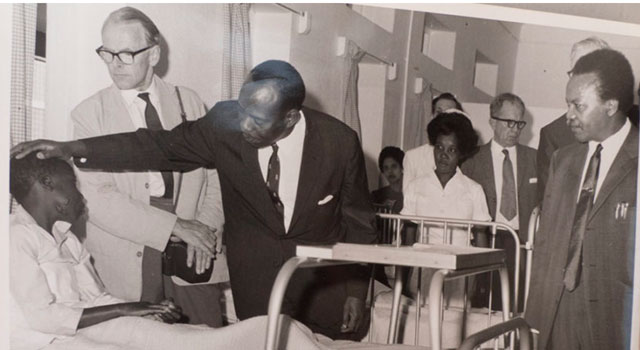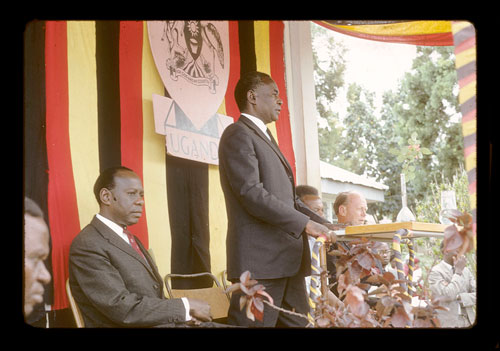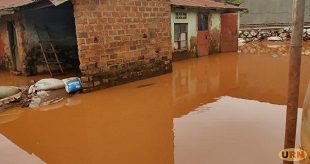
Staying Alive 2: Very Important People and Very Important Objects
 UCI AT 50: The Uganda Cancer Institute (UCI) that started on August 8, 1967 is celebrating 50 years. One of the activities in the month-long celebrations is a launch of a book this week – STAYING ALIVE – that documents the journey of Uganda Cancer Institute from 1967-2017. This blog post, from HIPUganda, is one in a series that has five excerpts.
UCI AT 50: The Uganda Cancer Institute (UCI) that started on August 8, 1967 is celebrating 50 years. One of the activities in the month-long celebrations is a launch of a book this week – STAYING ALIVE – that documents the journey of Uganda Cancer Institute from 1967-2017. This blog post, from HIPUganda, is one in a series that has five excerpts.
Kampala, Uganda| HIPUGANDA | This is a continuation of the previous blog post with which we started to work our way towards the exhibition and book launch of Staying Alive, Documenting the Uganda Cancer Institute. In that post Marissa Mika introduced herself by sharing some thoughts about the photographs she came across in her research on the history of the institute that celebrates its 50th anniversary this year.
This time we will further introduce some of the Very Important People (V.I.P.) of the early days of the institute.
Next to the V.I.P.’s this post discusses the historical photographs as Very Important Objects (V.I.O.) by pointing out some of their characteristics and materiality.
V.I.O.
The pictures that Marissa Mika came across in her research have two different materialities; prints and slides. There is a big difference between these two kinds of image objects that is easily forgotten when viewing the photographs they carry on a screen. Slides can only be seen if light pours through them, prints are paper objects that we can see because light is reflected from them.

V.I.P.
The former colonial medical officers I spoke with who worked at Mulago Hospital in the 1950s and 1960s often had two dominant memories—outstanding gardening opportunities on the green hills of Kampala and abundant clinical material provided by Ugandan patients, often encountered in the operating theatre or in the morgue. Many also had memories of Irish surgeon and colonial medical officer Denis Burkitt in which photographs had an important place.
Staying Alive 2: Very Important People and Very Important Objects https://t.co/joQ2WGnvhL pic.twitter.com/Igqw2pj3lR
— HIP Uganda (@HIPUganda) July 14, 2017
RELATED ARTICLE
 The Independent Uganda: You get the Truth we Pay the Price
The Independent Uganda: You get the Truth we Pay the Price



